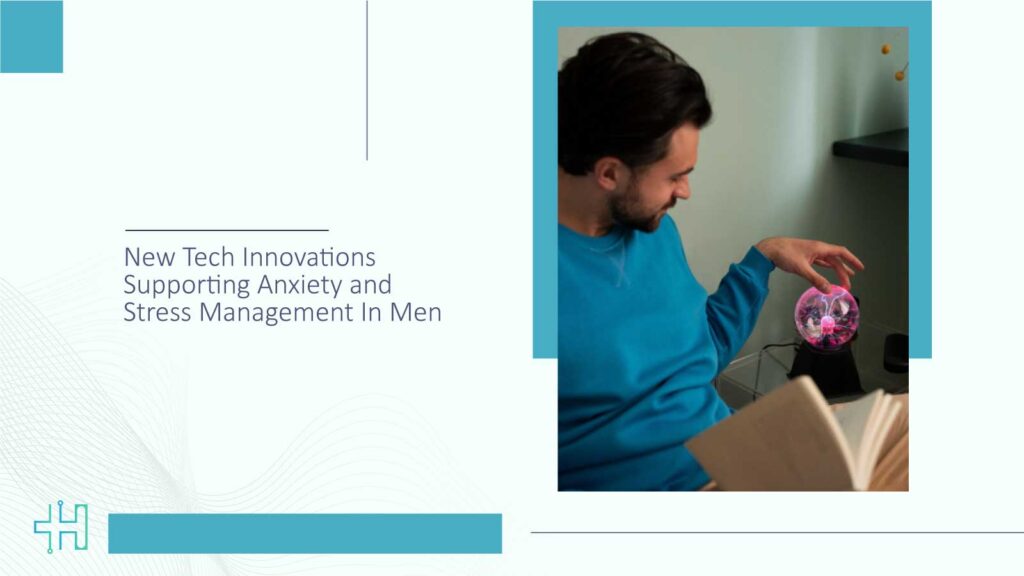Many men prefer quiet action instead of long conversations about their feelings. This makes discreet support especially valuable in their daily lives. New tech innovations are giving them private and practical ways to manage anxiety and stress with tools that adjust to their routines.
The Psychology Behind Men Choosing Tech for Emotional Balance
Many men respond well to solutions that foster a sense of autonomy and mastery. This is a core idea in behavioural psychology. When men feel they can direct their own progress, they are more likely to stay engaged. New tech innovations support this mindset by offering quiet guidance, measurable feedback, and tools that adapt to personal patterns.
Another factor comes from cognitive load theory. Men often manage packed schedules, so simple, structured interventions feel easier to adopt.
A wearable that tracks heart rate variability or an AI app that suggests a two-minute breathing exercise reduces mental load instead of adding to it. These tools help men shift from reactive states to calmer thinking because the device handles the interpretation of stress signals.
Neuroscience adds another layer. Short, repeated actions can reinforce calmer neural pathways. Many digital platforms use micro-interventions that encourage this repetition.
The result is a positive loop where the technology delivers a cue, the user acts, and the brain begins to associate that action with relief. Over time, men gain more emotional steadiness simply by following signals from devices they already trust.
How New Tech Innovations Fit Into Daily Life
Modern tools work best when they slide into routines without friction. That is why many new tech innovations for anxiety and stress relief are designed around everyday moments.
A smartwatch alerts a user when stress signals rise during a busy morning. An AI-guided app suggests a short grounding exercise during a commute. A calming audio tool helps unwind before sleep. These small interactions create steady support across the day.
Men often appreciate solutions that respond at the right time. The technology does the monitoring, so the user does not need to think about when to check in. This timing effect can strengthen consistency, which is a key psychological driver for long-term balance.
As the tools track patterns and offer personalised guidance, they give men a sense of steadiness that matches the pace of modern work and life.
Practical Adoption for Healthtech Leaders
Tech leaders and wellness innovators in the U.S. are now shaping solutions that feel natural for male users. A strong starting point is designing platforms that reduce friction. Quick onboarding, clear instructions, and minimal cognitive load help men stay engaged.
Real-time insights from wearables or apps give users steady guidance without demanding emotional disclosure. Partnerships with clinicians and behavioural scientists add depth to these tools. This allows companies to build features that match real patterns in male stress responses.
When users trust the system, they interact more often and gain more value. This approach strengthens product adoption and supports measurable mental wellness outcomes across busy male populations.
Looking at the Road Ahead
The landscape of mental wellness technology is expanding at a steady pace. Tools are becoming smarter, more intuitive, and far more aligned with the way men choose to handle anxiety.
As algorithms improve and sensors gain accuracy, the support becomes more personalised. Daily guidance grows more precise, and the experience feels less like a separate task and more like a natural part of life.
This shift signals a promising future for male wellness. Men gain access to calm thinking, better focus, and steadier emotional habits through simple digital touchpoints.
Healthtech innovators who build with evidence, empathy, and ease of use in mind can create meaningful impact across workplaces, homes, and community spaces.
FAQs
1. What tech innovations are most effective for supporting men with anxiety?
Wearables, AI-guided mental wellness apps, and biofeedback technologies show the strongest results because they offer timely cues, personalised insight, and simple actions.
2. How does digital mental wellness technology appeal specifically to male users?
Men often prefer tools that respect privacy, give clear data, and offer practical steps. Tech solutions provide this structure with minimal emotional pressure.
3. Are AI-based mental health apps reliable for workplace wellness programs?
They can be reliable when built on clinically validated methods and used as part of a blended approach with human oversight and data-backed monitoring.
4. What metrics should companies track when adopting mental wellness technology for male employees?
Useful metrics include engagement rates, stress trend data from wearables, completion of micro sessions, and changes in self-reported anxiety scores.
5. How can healthtech leaders ensure long-term adoption of wellness tools among men?
Focus on simple onboarding, strong privacy controls, personalised recommendations, and features that fit daily routines without adding cognitive load.
Dive deeper into the future of healthcare. Keep reading on Health Technology Insights.
To participate in our interviews, please write to our HealthTech Media Room at info@intentamplify.com







